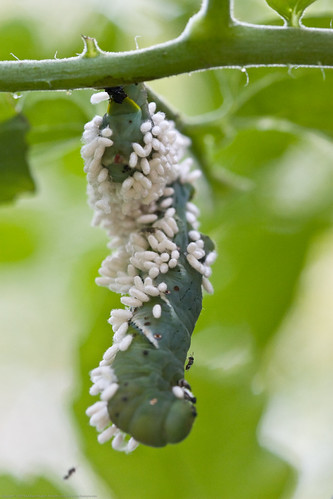 source
source
.
(Please refer to this newer post for an update on our personal views on vaccination. We still very much advocate elderberry elixir, just not as the single means of fighting an increasingly virulent H1N1 pandemic)
Early on in the pandemic, a bit less recently, I immersed myself in flublogia. These are long standing flu communities, lots of intellectual capital out there.. people I really admire and who really know what is up with the pandemic (doctors, nurses, epidemiologists, scientists in the field and those not in it – like me, am not a viral biologist).
To cut to the chase – neither I nor my kids will be taking the H1N1 vaccine. Why? Beyond the usual concerns that arise from the fact that this vaccine has been extremely fast tracked, under emergency actions, the vaccine to be deployed just about anywhere in the the world was generated from sequence from the earliest identified infections.
This means that the epitopes generated (the proteins that were produced from these early genetic sequences and then used to create a vaccine) may possibly be sufficiently different from those that H1N1 now carries, having passed through so many people, so as to render the vaccine of little use.
Also, poorly reported on in the press (as usual), is the problem of the spread of two genetic changes of note: tamiflu resistance and also a change that allows the virus to be more virulent in colder temperatures (this impacts the where and how the virus replicates in our lungs – shallow or deep).
These sorts of things makes a mom mostly want to hide her kids away but its hard, we do not homeschool all our three kids, just one.
I have stocked up on all sorts of meds, herbal teas for fevers and vitamin C boosting, rehydration powders and liquids, etc. I have laid in stocks of N95 masks and gloves.
I am ready to take on the swine flu but I would rather we never get it. I actually suspect that we did get it this past March (sick for a month, all of us) but if we did, it likely would not confer any meaningful immunity to a second wave or third wave virus that would have evolved sufficiently to bypass our nascent immunological defenses against this disease.
With all this in mind, my ears perked when I heard about a traditional medicinal that was shown in scientific studies to have activity against H1N1 – Elderberry, also known as Sambucus.
The wiki says:
In a placebo-controlled, double-blind study, elderberry was shown to be effective for treating Influenza B. [1] People using the elderberry extract recovered much faster than those only on a placebo. This is partially due to the fact that Elderberry inhibits neuraminidase, the enzyme used by the virus to spread infection to host cells.
A small study published in 2004 showed that 93% of flu patients given extract were completely symptom-free within two days; those taking a placebo recovered in about six days. This current study shows that, indeed, it works for type A flu, reports lead researcher Erling Thom, with the University of Oslo in Norway.[2]
Thom’s findings were presented at the 15th Annual Conference on Antiviral Research.
The study involved 60 patients who had been suffering with flu symptoms for 48 hours or less; 90% were infected with the A strain of the virus, 10% were infected with type B. Half the group took 15 milliliters of extract and the other group took a placebo four times a day for five days.
Patients in the extract group had “pronounced improvements” in flu symptoms after three days: nearly 90% of patients had complete cure within two to three days. Also, the extract group had no drowsiness, the downside of many flu treatments. The placebo group didn’t recover until at least day six; they also took more painkillers and nasal sprays.
It’s likely that antioxidants called flavonoids—which are contained in the extract—stimulate the immune system, writes Thom. Also, other compounds in elderberry, called anthocyanins, have an anti-inflammatory effect; this could explain the effect on aches, pains, and fever.
Elderberry extract could be an “efficient and safe treatment” for flu symptoms in otherwise healthy people and for those with compromised immune systems, such as the elderly, Thom adds.
Russell Greenfield, MD, a leading practitioner of integrative medicine and medical director of Carolinas Integrative Health, advocates treating flu with black elderberry, he says in a news release. “It can be given to children and adults, and with no known side effects or negative interactions,” he says.
“But don’t expect grandma’s elderberry jam” to ease flu symptoms like body aches, cough, and fever, he warns. “Extract is the only black elderberry preparation shown effective in clinical studies.”
refs:
1) ^ Zakay-Rones, Zichria; Noemi Varsano, Moshe Zlotnik, Orly Manor, Liora Regev, Miriam Schlesinger, Madeleine Mumcuoglu (1995). “Inhibition of Several Strains of Influenza Virus in Vitro and Reduction of Symptoms by an Elderberry Extract (Sambucus nigra L.) during an Outbreak of Influenza B Panama” (PDF). J Altern Complement Med 1 (4): 361-9. PMID 9395631. http://www.liebertonline.com/doi/pdfplus/10.1089/acm.1995.1.361. Retrieved September 8, 2009.
2) Z Zakay-Rones, E Thom, T Wollan and J Wadstein. “Randomized Study of the Efficacy and Safety of Oral Elderberry Extract in the Treatment of Influenza A and B Virus Infections”, Journal of International Medical Research (pdf)
More recently the following study came out, specific to pandemic H1N1:
Roschek B Jr, Fink RC, McMichael MD, Li D, Alberte RS., Elderberry flavonoids bind to and prevent H1N1 infection in vitro., Phytochemistry. 2009 Jul;70(10):1255-61. Epub 2009 Aug 12. PMID 19682714
Abstract:
A ionization technique in mass spectrometry called Direct Analysis in Real Time Mass Spectrometry (DART TOF-MS) coupled with a Direct Binding Assay was used to identify and characterize anti-viral components of an elderberry fruit (Sambucus nigra L.) extract without either derivatization or separation by standard chromatographic techniques. The elderberry extract inhibited Human Influenza A (H1N1) infection in vitro with an IC(50) value of 252+/-34 microg/mL. The Direct Binding Assay established that flavonoids from the elderberry extract bind to H1N1 virions and, when bound, block the ability of the viruses to infect host cells. Two compounds were identified, 5,7,3′,4′-tetra-O-methylquercetin (1) and 5,7-dihydroxy-4-oxo-2-(3,4,5-trihydroxyphenyl)chroman-3-yl-3,4,5-trihydroxycyclohexanecarboxylate (2), as H1N1-bound chemical species. Compound 1 and dihydromyricetin (3), the corresponding 3-hydroxyflavonone of 2, were synthesized and shown to inhibit H1N1 infection in vitro by binding to H1N1 virions, blocking host cell entry and/or recognition. Compound 1 gave an IC(50) of 0.13 microg/mL (0.36 microM) for H1N1 infection inhibition, while dihydromyricetin (3) achieved an IC(50) of 2.8 microg/mL (8.7 microM). The H1N1 inhibition activities of the elderberry flavonoids compare favorably to the known anti-influenza activities of Oseltamivir (Tamiflu; 0.32 microM) and Amantadine (27 microM).
Thus, I have been meaning to make some sort of elderberry syrup for my family but wasnt sure where to start.
Then, I stopped by a recently opened herbal medicine center and found that they not only had two different elderberry syrups on hand, they also had a recipe and the ingredients to make it at home! I asked them for the latter and brought home all sorts of goodies!

Elderberry Elixir
Ingredients
- 7 cups spring water
- 1 cups dried elderberries
- 4 medium tongues of dried astragulus
- 6 pieces of Fo Ti (Ho Shu Wa)
- 1 ounce dried rose hips
- 1/4 ounce dried nettles
- 2 cups honey
Directions
Bring water to boil in enamel or stainless steel pot. Add elderberries, astragulus, fo ti, and rose hips, stir, cover and simmer on lowest setting for 35 minutes. Add nettles, stir, simmer for 5- 7 minutes. Take off heat and crush elderberries as much as possible. Strain through cheese cloth several times and, while still hot, add 2 cups honey. Mix until in solution. Store in the refrigerator.
Dosing:
Adults: 2 teaspoons/day all winter
Children: 1 teaspoon/day all winter
If you are actively sick take as follows:
Adults: 2 teaspoons 4 times a day
Children: 1 teaspoon 4 times a day

On the plate above, from top left clockwise: dried nettles (green), dried rose hips (red), astragulus (bark tongues), and dried elderberries (dark purple).
Sorry, in the shot above I left out the Fo Ti, seen below.


How they came home.

It doesnt taste too bad, the 3 yo loves it!
As per request, I have added the contact information for the herbal apothecary where I sourced these ingredients (and recipe!)
Alternatives For Health
381 Sturbridge Road
Brimfield, MA 01010
(413) 245-6111









































